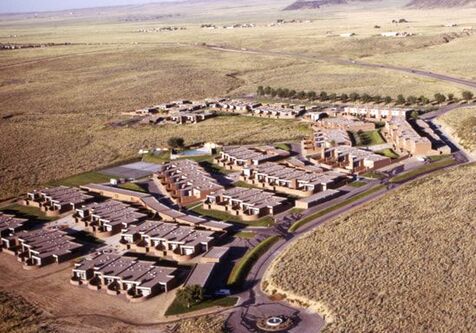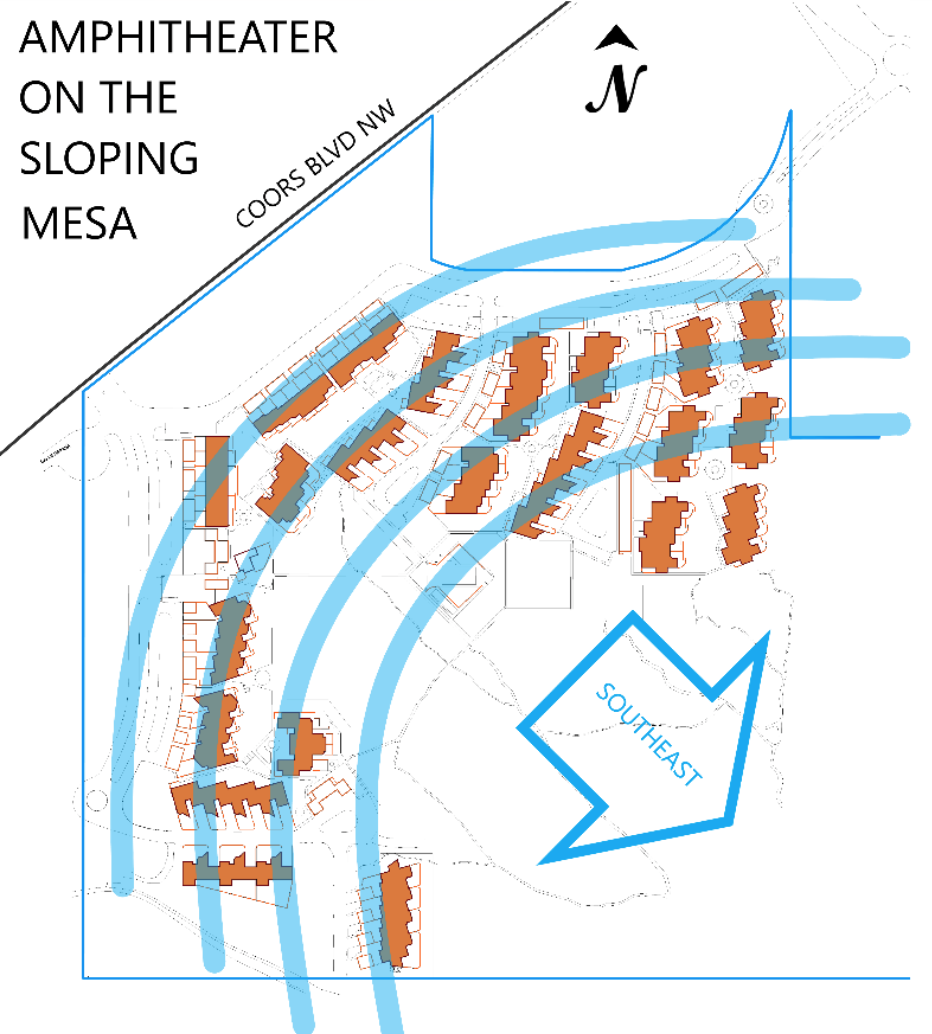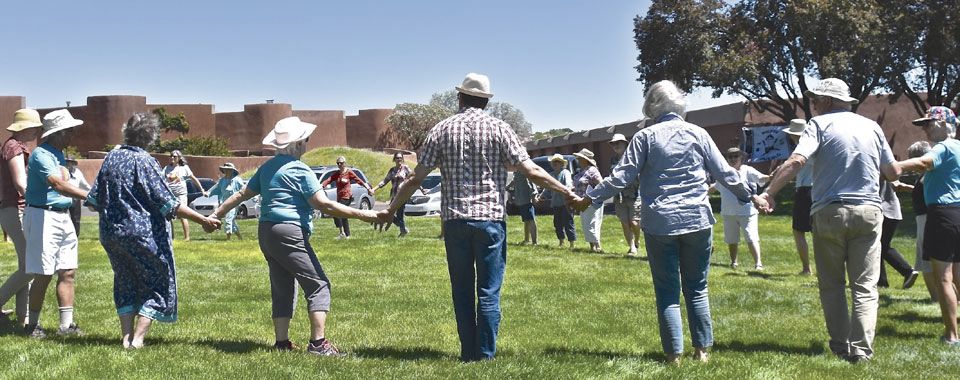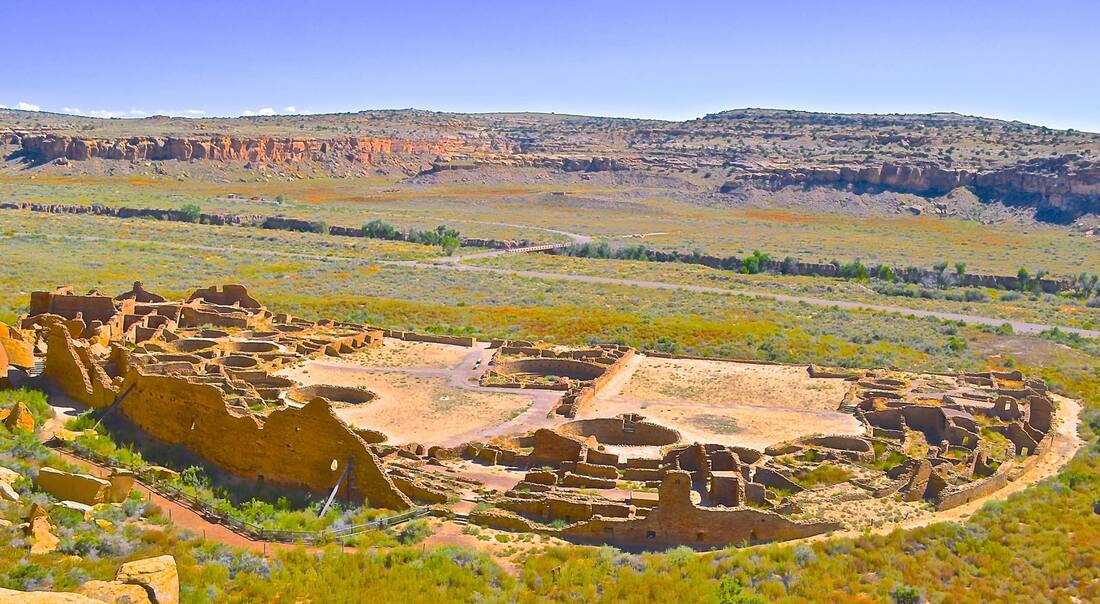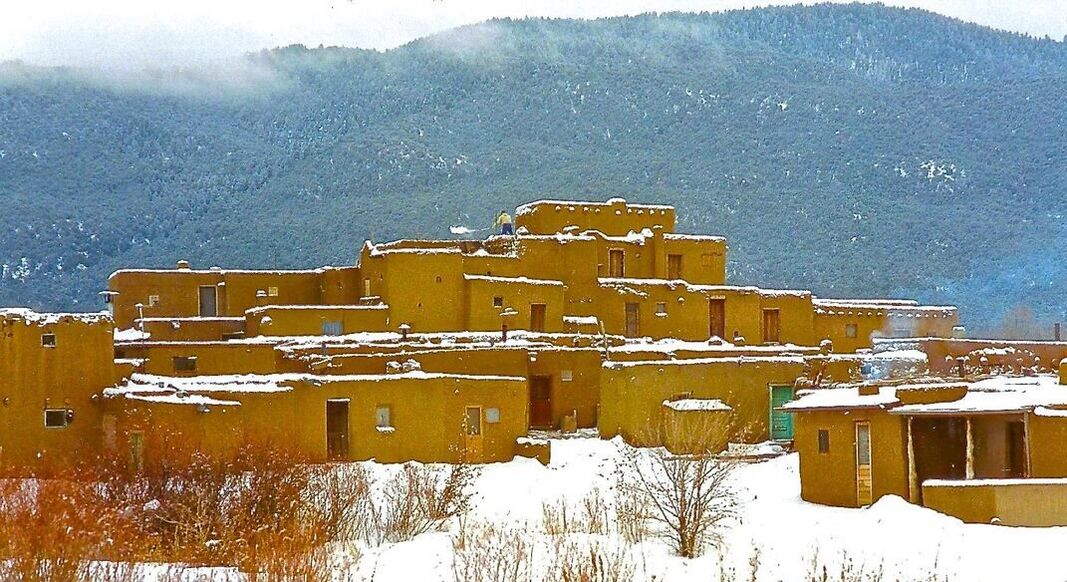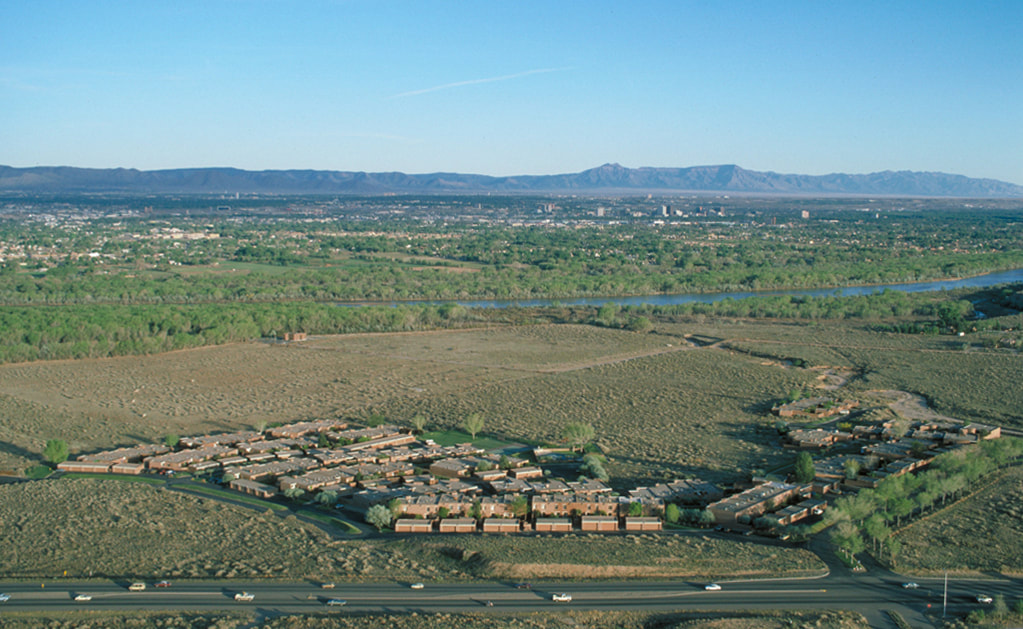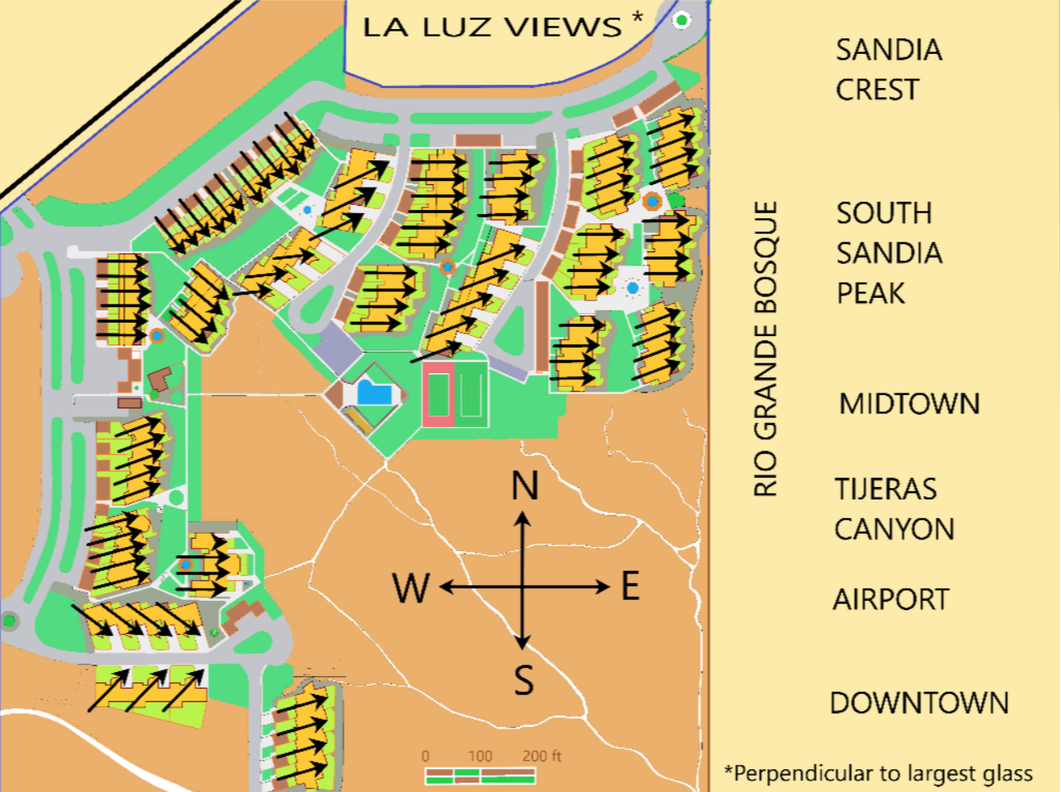looking forward |
Upon touring La Luz recently, New Mexico passive solar architect Bruce Davis noted, “what continues, is that which adapts to new circumstances.” La Luz was designed to adapt and still maintain its beauty. HOW to adapt is the task at hand.
As the demographics of La Luz shift through time, new residents bring their lens — those with children will be interested in play spaces being a part of the La Luz landscape once again. Rising energy costs and the coming shift to electric vehicles will bring a desire for the infrastructure to support electric vehicle charging and photvoltaic installations on site. Any of these changes can potentially contribute to the ongoing beauty and vitality of La Luz.
|
climate
|
Higher temperatures and less water are going to drive change. The campus landscape will need to be assessed as a complete system, with an emphasis on water catchment, native plantings and climate-ready trees. Water must be understood as a precious resource, not something that needs to be efficiently drained away. The private road system in La Luz allows for the exploration of more permeable surfaces.
Photos from early La Luz show a landscape character very fitting a 20th century desert oasis. Bluegrass and apple trees and a conspicuous double row of cottonwoods lined the road to the first phase of construction: Arco. The rest of the grounds were covered in Kentucky Bluegrass. That was then…
That “oasis look” required about 10 million gallons, equivalent to 60 inches of annual rainfall, per year to keep green. The Landowners' Association spent time every year trying to reduce water use. In 2014 La Luz took the initiative to get some advice and commit to a decade of changing the oasis to a Xeric plan. Several conversions have been completed. Many more remain to be addressed.
Every home in La Luz has a view of the "sacred" mountains. The houses closer to the bosque have an unfettered view of the natural open space with the mountains as a backdrop. This natural habitat is owned by La Luz and will never be developed. Homes farther up the mesa slope have stunning views of the nocturnal city lights as a bonus. The large glass in each unit means that the featured view is enjoyed floor-to-ceiling, wall-to-wall.
|
built + natural
|
Three sides adobe, one side glass is an overly-simple description of a La Luz home. Actually, it encompasses the panoramic views, energy needs, property values, personal comfort, community, privacy and most likely, health. The ingenious design of La Luz has very specific elements that were carefully created to make this little village a special and unique example in the world of private residences. Today La Luz is newly recognized as a National Historic District.
La Luz was fitted deftly into west mesa along a two-lane section of State Highway 45 (Coors), about eight hundred yards from the Rio Grande. At that location Coors is pointing northeast/southwest. With attention to using the sun, particularly for heating, the clusters are oriented to receive maximum morning and midday winter sun. Then each cluster of homes was shaped and oriented, as a group, so that the best view of the mountains, the bosque and the twinkling city lights formed the primary view. The shape of the homes and the placement of the unique wall-of-glass implicitly defines the character of each individual dwelling.
The built environment in La Luz has held up remarkably well. The stucco color has shifted through the years to a lighter tone and most homes have upgraded to insulated double-pane windows. Roofs are slower to transition to TPO from the tar and gravel original composition, but when the need arises, it's been a great opportunity for residents to increase their insulation.
|
community
|
Antoine Predock designed an environment that encourages interaction with neighbors, respect for the land, and a deep sense of place. His design offers both privacy and ease of community connection; the convenience of urban life, while residents are anchored to the sacred mountains and the acres of open space.
To care for something in common, to share in land ownership, to maintain a living community as a community is unique in today's isolating western culture. To live in a place and to understand that place — as it connects to the natural environment, as it relates to the history of the land and its people — engenders reverence and stewardship, civic pride and social equity.
|
clustered housing |
Homes are grouped in tiered rows on 23 acres out of the 72 acres comprising La Luz holdings. Homes rise along the slope of the land, and each grouping faces open space of shared plazas, and eastward toward La Luz’s 49 acres of protected open space, Bosque, Rio Grande, and the Sandia and Manzano mountains. The overall design minimizes human intrusion and emphasizes living lightly on the land.
Touring the grounds, one realizes that the views of the Sandia and Manzano mountian ranges, the Rio Grande bosque (cottonwood forest) and the city of Albuquerque are present from nearly everywhere on the common grounds. Thanks to the sloping shape of the west mesa, these large panoramic views give an open-air, rural feeling to all who live and visit here.
|
|
In 1978 the historic importance of this development was recognized by the State of New Mexico through its Historic Preservation Division by inclusion in its Registers of Cultural Properties (site number 539). La Luz was placed on The National Register of Historic Properties in the fall of 2023.
|















